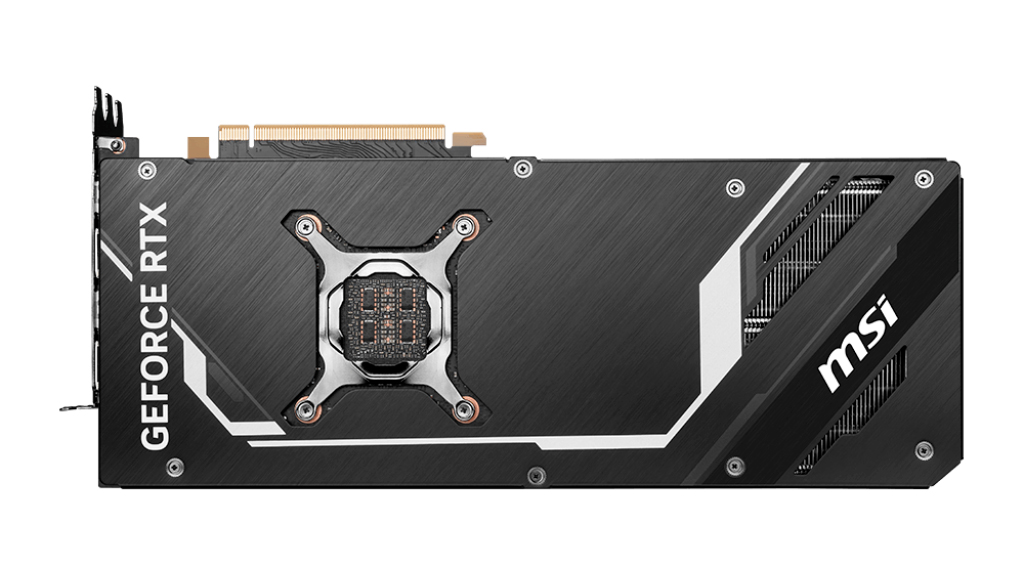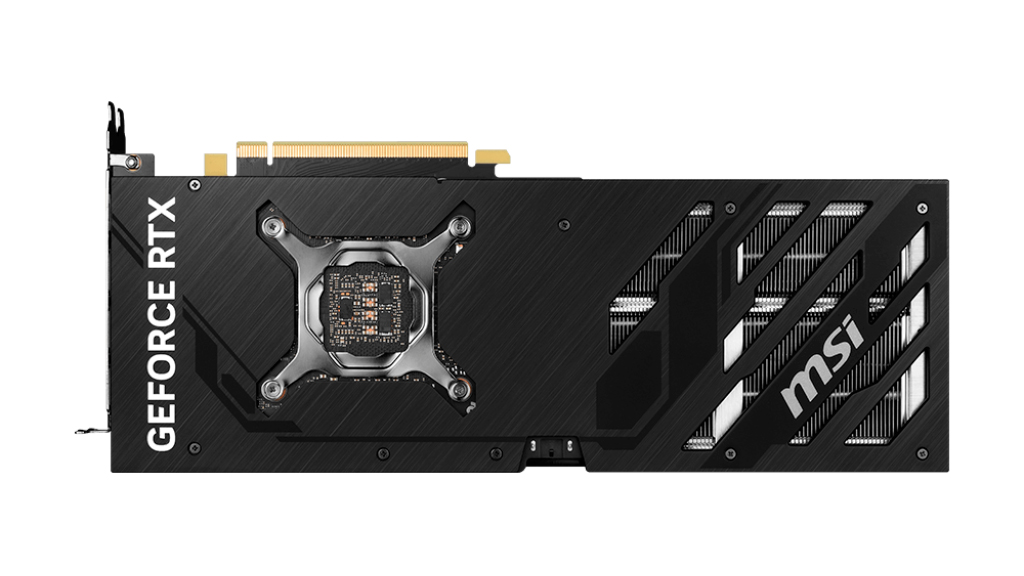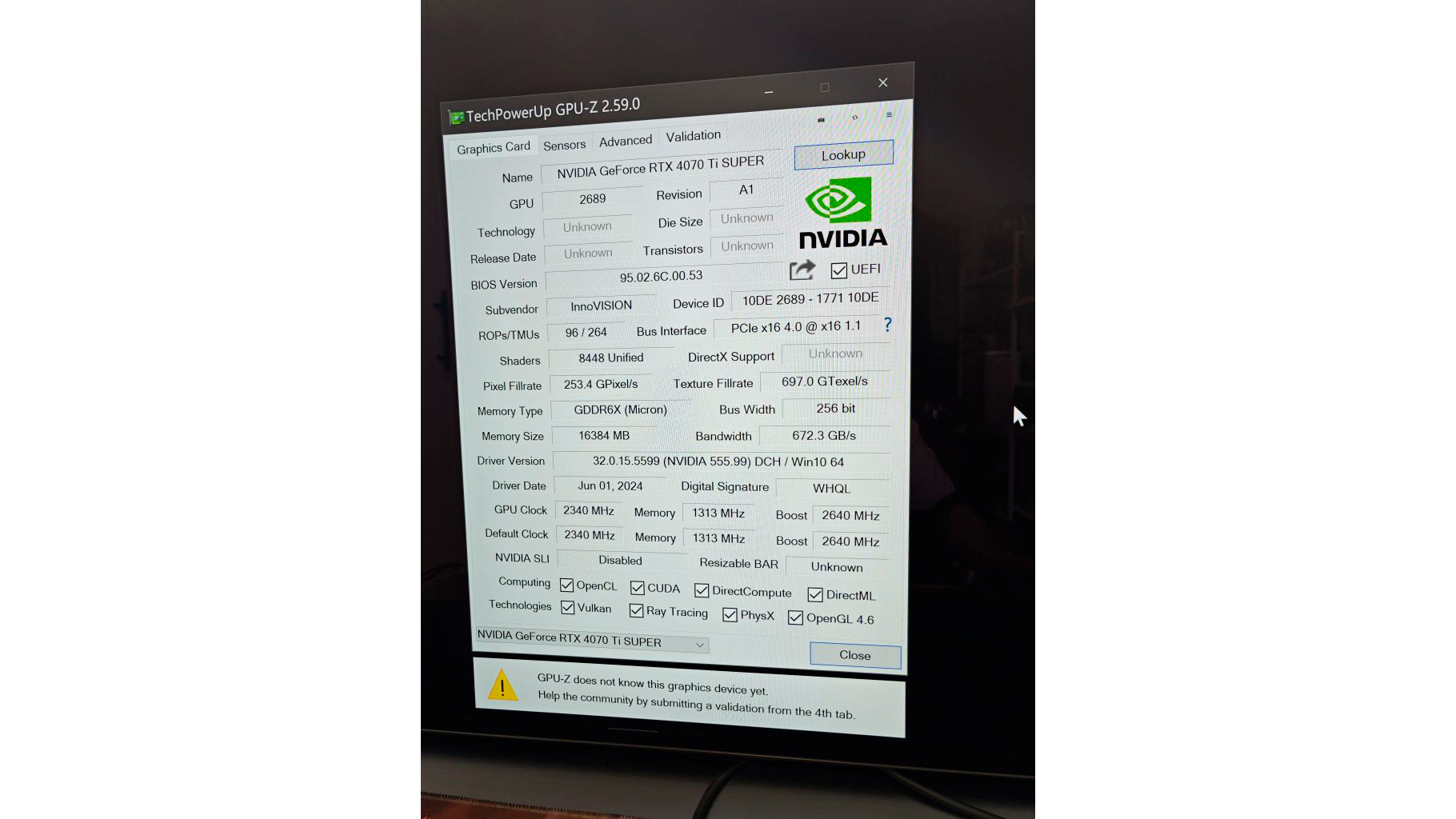Nvidia RTX 4070 Ti Super using AD102 GPU appears — a fresh variant surfaces with a harvested RTX 4090 die

The Nvidia GeForce RTX 4070 Ti Super, one of the best graphics cards, won't be the only one of its kind on the market. MSI (via wxnod) recently launched the RTX 4070 Ti Super 16G Ventus 3X Black OC, which features different silicon than the original RTX 4070 Ti Super.
Nvidia first shipped the RTX 4070 Ti Super with AD103 silicon — the same chip used in the RTX 4080 and RTX 4080 Super. There's nothing surprising about Nvidia using the same die for multiple GPU variants, as we've covered in our Nvidia Ada Lovelace RTX 40-series overview. However, the renders for MSI's latest custom RTX 4070 Ti Super show that the graphics card sports a different die. The capacitor layout between the RTX 4070 Ti Super 16G Ventus 3X Black OC and the previously-released RTX 4070 Ti Super 16G Ventus 3X OC looks different. The former has four SP-Caps and two MLCC clusters, while the latter only has three SP-Caps, implying the move to a different silicon.
The RTX 4070 Ti Super's AD103 silicon has 66 SMs enabled out of the 80 available on the die. The configuration yields 8,448 CUDA cores, and it also has four 64-bit memory interfaces enabled. Nvidia's only other potential silicon would be a move up to the larger AD102 — AD104 used in the vanilla RTX 4070 Ti doesn't have enough memory controllers or SMs. The AD102 silicon on the other hand contains 144 SMs (18,432 CUDA cores) and six 64-bit memory controllers. That means the 'new' GeForce RTX 4070 Ti Super only has 45.8% of the AD102 SMs enabled, less than half of what it potentially offers — along with 66.7% of the memory interfaces.


The shift from AD103 to AD102 silicon for the 4070 Ti Super likely comes from a desire to make use of chips that can't meet the requirements for other more potent GPUs. Yields always vary, and over time Nvidia has likely acquired a few AD102 chips that can't even meet the requirements for RTX 4080 Super. However, the switch in silicon typically won't benefit the consumer.
The RTX 4070 Ti Super's specifications and performance remain the same. For example, MSI's GeForce RTX 4070 Ti Super 16G Ventus 3X Black OC shares the same 2,655 MHz boost clock as the GeForce RTX 4070 Ti Super 16G Ventus 3X OC. Power consumption varies slightly, at least on paper, though without in-depth testing we wouldn't want to try and draw any firm conclusions.
The RTX 4070 Ti Super 16G Ventus 3X Black OC (295W) has a 10W higher power consumption than the RTX 4070 Ti Super 16G Ventus 3X OC. That looks like the bigger AD102 die pulls a bit more power, or perhaps MSI just wants to give the newer variant a bit more headroom. Regardless, the RTX 4070 Ti Super still comes with a 16-pin power connector, and the extra 10W isn't something consumers need to fuss about. It also isn't an object of concern on the power supply's part, as MSI still recommends a 700W unit as a minimum for its GeForce RTX 4070 Ti Super 16G Ventus 3X Black OC.
The GeForce RTX 4070 Ti Super AD102 allows Nvidia to maximize silicon yield. Underperforming AD102 silicon that doesn't qualify, say, for a GeForce RTX 4080 Super (the original RTX 4080 has been phased out) can be used in the RTX 4070 Ti Super. It's not the first time Nvidia has utilized this tactic, and the vendor isn't the only one to do it.
There's no way to re-enable any of the fused off SMs, and hasn't been for many years, so you're still getting the same basic specs. Along with more SMs, the AD102 silicon also has more NVENC and NVDEC blocks for video processing, but the extra units can also be fused off. This likely represents the final round of clearing out Ada Lovelace silicon, as we expect the Nvidia Blackwell RTX 50-series GPUs to arrive in just a few more months.
Get Tom's Hardware's best news and in-depth reviews, straight to your inbox.

Zhiye Liu is a news editor, memory reviewer, and SSD tester at Tom’s Hardware. Although he loves everything that’s hardware, he has a soft spot for CPUs, GPUs, and RAM.
-
bdcrlsn Ah, this brings back memories...sort of. I still have a GTX 560 Ti 448, which while named 560, had the GF110 processor of the 570/580, not the GF114 of the OG 560. A beast of an overclocker, but I digress. It was the same idea though, reusing processors that didn't meet certain criteria and using them in existing/new products.Reply -
oofdragon RDNA 4 RX 8800XT is coming soon, rumours have it $500 at better than 7900XT performance. I would not buy anything at this point other than a RTX4090 or some used card at a good enough price to resell it without losing.Reply -
Eximo Doesn't seem likely, that would cannibalize sales of the 7800XT and 7900 GRE, admittedly those might not be around much longer.Reply
Placing it as a 7900 GRE replacement seems more likely in the $550 range at launch. That puts it head to head with the lowest price 4070 Super. -
DS426 As long as nVidia has authorized this, it makes sense. Otherwise, MSI is playing with fire and risks becoming the next EVGA?!? Most would say "no sir, MSI is too big," but f*** around with nVidia and found out I say!!Reply -
Eximo They will have sold MSI the chips pre-binned and lasered into 4070 Ti Super level chips, they wouldn't bin them to that level themselves.Reply -
usertests Reply
I'm afraid it will be closer to $600.oofdragon said:RDNA 4 RX 8800XT is coming soon, rumours have it $500 at better than 7900XT performance. I would not buy anything at this point other than a RTX4090 or some used card at a good enough price to resell it without losing.
If there were 32 GB versions dropping at around $700-750, that would be funny. -
dk382 Reply
MSI would have no reason to do this themselves (why pay for a more expensive chip and then sell it in a lower-tier product?), and it would likely be beyond their capability anyway.DS426 said:As long as nVidia has authorized this, it makes sense. Otherwise, MSI is playing with fire and risks becoming the next EVGA?!? Most would say "no sir, MSI is too big," but f*** around with nVidia and found out I say!!
Nvidia routinely takes chips with partial defects, fuses off the defective parts, and then sell them "down-binned" to their AIB partners. This is not new or unique. -
DS426 Reply
Fair point my friends. I would assume this also and not that MSI is going some round-about way to make this happen, but stranger things have happened.dk382 said:MSI would have no reason to do this themselves (why pay for a more expensive chip and then sell it in a lower-tier product?), and it would likely be beyond their capability anyway.
Nvidia routinely takes chips with partial defects, fuses off the defective parts, and then sell them "down-binned" to their AIB partners. This is not new or unique.
AMD, Intel, and any other major chipmakers do this as well. If I'm not mistaken, some of the X3D chips are down-binned EPYC chips?
Always great to see silicon not wasted and, as others have noted, this sometimes allows for awesome OC SKU's. -
Amdlova Why people belive the new RDNA4 (rdna 3.5) will be cheap? There tons of rdna 2 and rdna 3 to be absorbed on the market :)Reply
Just buy a nvidia now and cry later :)
